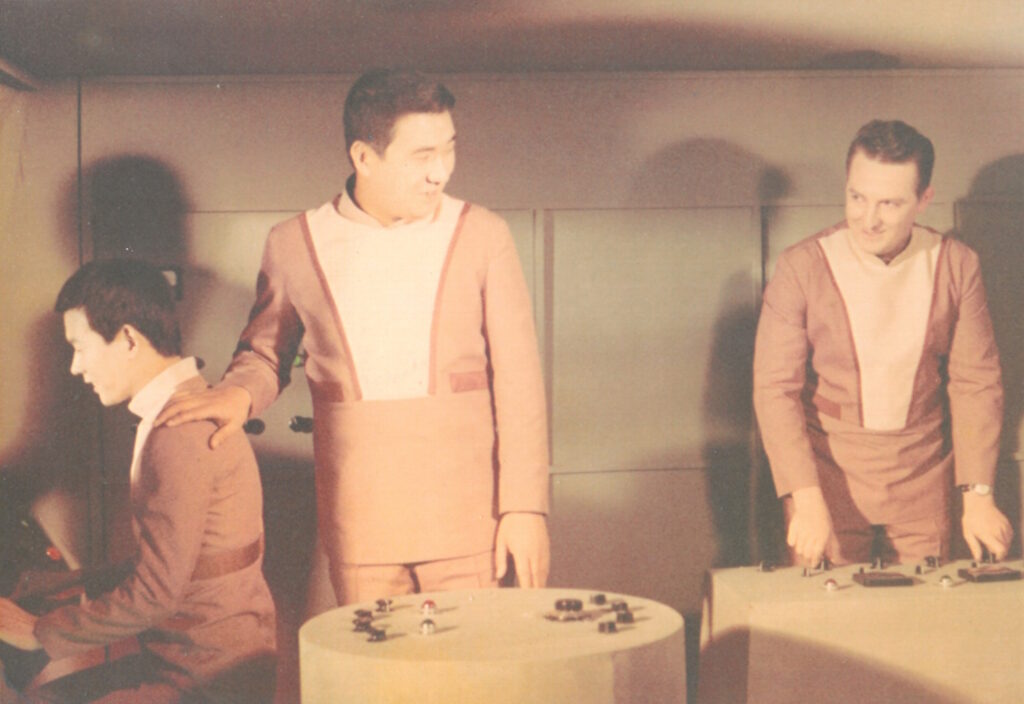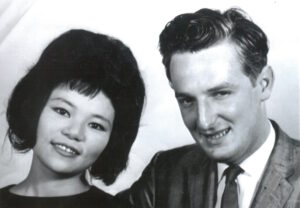
I was born on June 8, 1942, in Little Falls N.Y. My father was a textile mill worker and moved back to his hometown of Cohoes, N.Y. a small factory city located where the Mohawk River runs into the Hudson River. My father’s parents had moved there from Canada. Housing was owned by the factory, and shopping was accomplished In the Company store. Needless to say, l was born into poverty. At the age of 13 I was employed in the same textile factory as mom and dad, where the pay scale went by age, and sex. Naturally my father was paid the most, about $50. Per week, then my mother arid I received a much lower scale. In short, I was being aimed with a future as a factory worker. Even as a child I knew I had to get out of the situation or live my entire life on the bottom scale of society.
At the age of 12, my grandmother gave me a notebook filled with blank pages to be filled in by myself. The first words I wrote were part of a short story, “A Boy and his Dog”. I had been born with a talent. But I had to get out of the factory and without an education I saw no future. At the age of 16, I entered an Army Recruiting Office, where the Sergeant forged some paperwork. I was on my way to a new life, however at Albany N.Y. a sharp-eyed military clerk caught the Sergeant’s handy paperwork, and I was told to come back at age 17.
At age 17, I entered the U.S. Army for a new life and a better paycheck, I think It amounted to $72. Per month. I was assigned to become an M-48 Tank Driver after basic. But the Army messed up my orders and instead of being assigned to Fort Knox, KY, I was sent to Fort Dix, NJ.
When I walked into the Personnel Office at Fort Dix, a young officer looked at my orders and said, “WelI Private, we don’t have any tanks here at Fort Dix, do you know how to type?” I took one quick look around the office and saw other soldiers drinking coffee, pushing papers around and talking.
“Why certainly I do,” I said.
“Well, we can use the help here. After 30-days we can put you in for a change in MOS (Military Occupational Specialty).”
Landing a job in a clean office and drinking coffee was like a dream come true for an uneducated kid from the poor side of life. The first mission I assigned myself was to report to the Base Education Office and sign up to earn a High School Education at night. In addition, I also signed up for a typing class.
I was one busy soldier for a while, reporting to work and military details during the day and bringing all my work to the barracks to type. There was no such thing as privacy in an open bay barracks, but I learned to close my mind off and concentrate on my schoolwork and work from the office.
When a position opened to work for the Commander, I put in for it. I learned to use the Base Education Office for whatever my new position required of me. Having been denied much of a real education in my previous life as a civilian. I enjoyed going to work clean, leaving work clean, and using my position to improve my life as a soldier. Since I controlled the training schedule and scheduled the young officers for the classes they would be giving, I learned that I had power over them. As a PFC (Private First Class) I even got a private room in the 10th Overseas Company, although I was assigned to the USAPC (US Army Personnel Center). As a private I controlled most of what went on everywhere on the base. I was able to call official vehicles for my transportation, order meals prepared special and brought to my room. Although I was too young to drink, I was running a bar out of my room, restricted to others who also had power.
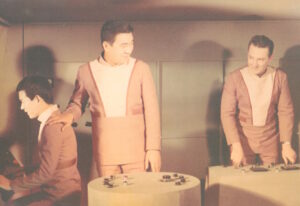
After about three years of running Fort Dix, I received an assignment to Japan. I could have gotten out of it but decided it would be a great adventure. I noted that there was no unit assignment but didn’t think much about it. I arrived at Yokohama, Japan. They would have us line-up in formation. I noticed that they kept assigning people ahead of me. When they got to me, they would say, “OH! You’re PS&S, Civilian Clothes, Expense Account, Tri-Service Assignment.”
I kept thinking. “Yea, Sure? Nobody wears civilian clothes in the military, let alone have an expense account, increased food ration rate. I’m getting screwed for sure.”
After three days they gave me my orders and told me to grab a bus across the street. When the bus took off, it traveled about 15-miles. Then I was the only one remaining on the bus. The Japanese driver shouted, “last stop, everybody off!”
I didn’t know where I was in Japan, I could not speak word one In Japanese, all I knew was the Japanese driver told me I had to reach Sa Gami Ono, Japan, just outside Tokyo, Japan near U.S. Army Camp Zama.
I was scared stiff, still didn’t know where I was, nobody had told me what PS&S meant, had no idea what Pacific Stars & Stripes was. But I made it to Camp Zama after flagging down a military looking bus that just happened to be going to Camp Zama. At their Personnel Office they were able to point me to Sa Gami One, where I learned that single PS&S people stayed at a barracks. When I got there, I was introduced to the Japanese houseboy (about 50-years old) who was given a job taking care of the PS&S Barracks. He Just kept cleaning the barracks constantly. He told me that PS&S people would only come over If they had to get something out of their military clothes.
“You just wait, somebody come show you.” So, I spent about three days waiting for somebody to show up. I was then taken to The Pacific Stars & Stripes building in downtown Tokyo. Sgt. Takashima oversaw the Stripes Admin Office. Everybody was in civilian clothes. He took me to meet the commander, Colonel William V. Schmitt. Also, in civilian clothes.
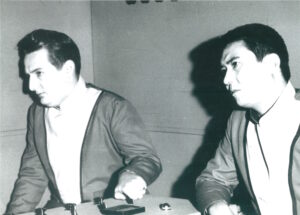
“What the hell you are doing in uniform,” he asked.
I was shocked and surprised?
Well, I’m in the Army Sir.,” I answered.
“Well, we don’t wear uniforms here, we don’t want to push the idea that the Japanese lost the war on them all the time. Find yourself some civilian clothes to wear or you’re gone. Take two weeks off to look around Tokyo. Where are you staying?”
I told him that they had a PS&S Barracks at Sa Gami Ono, that I might stay there.
“Nobody stays there, find yourself a girlfriend in Tokyo to stay with, that’s what all the guys do! Oh! We have the SandS Club, our own Press Club on the third floor. Go up and meet some of the people, they have good American food there and we have our own bar there too. Everybody assigned here Is on a 30-day probation period. If you don’t cut it you’re gone. We are a daily newspaper here and expect you to know what you’re doing and come out running.”
I could not believe it. All I’ve been doing since arriving in Japan was enjoying time off. Now I’m being told to find civilian clothes, go against my religion and find a girl to shack up with. The good news was that we had an expanded food allowance (Separate Rations), an expense account and that I was no longer to wear a uniform.
I went up to the SandS Club, ate, and went into the bar. I met a fellow Striper from New York State, Richard Dubicki, who took me under wing. He loaned me some civilian clothes and money. He told me that he heard I was going to be assigned to the Editorial Department. Dubicki worked on the Press Machines. He also pointed me to a tailor shop where the Stripes guys purchased handmade suits for $20.
I had not written for a weekly or by-weekly newspaper in my life. I had some work to do, I had 90-days to became a professional newspaper man. I discovered that in the SandS Club Bar I was surrounded by people many of which were much older than I, and certainly more educated than I. The first thing I did was ask around about who was the best feature writer, Hal Drake & Forest Kimler, the best hard news writer, Al Kramer, best columnist, Al Rickets, best headline writer, Forest Kimler, best lead writer, Forest Kimler. Then I went to each of these individuals.
“Hi,” I said, “I’m new at Stripes and I heard that you are the best Feature Writer, and was wondering if you would let me learn your style at Feature Writing, Headline Writing, etc.” It worked. It was the first time I had learned the Who, What, Where, When, How, and Why of the trade. They gave me a quick, course complete with the best tricks of the trade. In addition, they provided me with the means of supporting myself for the rest of my life. I became known in my own right, respected and looked up to.
At Stripes I began typing movie and radio schedules, then became Night Editor. Barry Freed and I went to Vietnam to locate and open the Stripes Circulation Bureau’s. I also served as Vietnam Saigon Circulation Bureau Chief, Staff Writer, Guam Bureau Chief, Philippine Chief, Japan Bureau Chief, and Senior Staff Writer. On another tour of Vietnam, I worked as 7 Air Force Combat News. On both tours of Vietnam, I worked on my own in Civilian clothes, finding my own way around.
I was captured once by the Viet Cong and escaped within 45-minutes. Capt. Dale Dye, and I became legends. He went on the become Technical Advisor for war movies. Dye would take movie stars out on a mini—Marine Training Course. One time I remember Tom Hanks had to stick up for him telling the Stars that it was for their own good.
Stripes became a way of life for me. It got to the point that Tim Hutchens, Editor & Chief, asked if I would mind having my Byline taken off a few of my stories. “It looks like you’re writing the whole paper now, not that you’re not, because you are. But we don’t want it to look like its being written by one Individual.” I think this was in 1980.
As I mentioned to you, several of us had our fields of expertise. Hal Drake was expert on the Korean War and boxing. I became their para-normal and Philippine Political Expert. Hal was much older than I, and it was no wonder that he was indeed best Feature and Hard News writer. I remember one day one of the younger people called him Pop. I laughed and he said to me, “Go ahead laugh, but someday they will be calling you Pop here.”
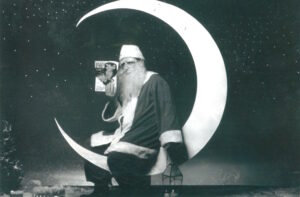
My first tour at Stripes was in 1964. My last tour I left in 1984. It was in 1980, one of the younger people who was too young to have served in Vietnam asked me what this small medal object was in my desk.
“That,” I answered, “is a P-38, a military can opener. You received three P-38’s per box of C-Rations. The company that made them found that you had to make 38- holes into the can top to open a can. You can have it, if you want.”
“Gee thanks Pop ,” he answered.
Hal Drake looked over from his desk and said, “I told you years ago that you would be called pop here someday.”
Now here I am at 80-years-old. An old striper. The old stripers t knew are dead, or on their way.
I didn’t realize it, but I had become their para-normal expert. I had been invited to the house at 118 Oceanside Drive, Amityville, N.Y. right after Jay Anson wrote his book, Amityville Horror. When Jay and Cathy Lutz came to Tokyo to promote the movie, “Amityville Horror,” I did a double page feature on them. Then all these strange things happened at the Pacific Stars & Stripes building to anybody that touched my story. Oh! I was the first one who informed George and Cathy that Jay Anson had died while they were on their way to Tokyo.
It began with my son who read my feature at my home. His bike had a safety inspection the day before. But his wheel flew off and left him with a scared face. A black cat had to be killed by police as they dragged it from my home The Stripes Pacific Editor at the time wrote a column on what happened to him, the Stripes, Photographer, the people in the composing room. The Column was called “Ropongee Horror”. Where the stripes building was located. The Photo Lab printed a ghostly picture that appeared every time they attempted to take a picture of George and Cathy Lutz, the column, and my story all appeared in the same edition of the paper. My double truck feature began on page 13.
After my first tour at Stripes, I did a story on Betty and Bernie Hill, featured in the book, “Incident at Exeter.” About Betty and her husband being taken up into a UFO and given a medical exam. I had little details like the Aliens didn’t know that her husband had false teeth due to battle wound in Korea. When they were giving Betty an exam during the UFO Flight, they attempted to pull her teeth out thinking that all earthlings might have removable teeth.
When I returned to Stripes, I did a recap on the Betty Hill story in a column. Then they would grab me to write Halloween stories. I came into work one day and everybody was asking where my Halloween feature was. The Stripes building was across from a Japanese Graveyard. Japanese Taxi drivers used to take their break on that street. By this time my Japanese was pretty good. So, I went down and started asking questions. The Japanese related a very common story concerning the ghost of a young lady who would flag down the taxi drivers to go to her home. When they got her there, she was gone and her mother told them she was, “Dead.”
I’ve enjoyed my life, strange as it turned out. I would have never lived such a life had it not been for Pacific Stars & Stripes.
Feel free to change anything in the above. I was looking at a published story that ran when I was in Germany. It appeared in the European Stars & Stripes. I always remembered it as one of the worst stories I had ever written. It was about an exercise at Hahn AB. I wrote it as a favor for a friend. I found it and when I read it, I realized that it might have been one of the best stories I had ever written. As I made it all up from things that occurred in Vietnam, putting guys into battle, then down towards the middle broke it into the exercise at a German base. I had taken reality, turned it into fiction, then back into reality all in one story. If I were teaching a writing class, I would hold it up as an example of taking a dry, routine, exercise story, into a breath holding collection of words.
Oh! I had forgotten to mention I left the Army after eight years, joined the Air Force, for another 14-years. All for total of 22-years, 11-months and nine-days and loved It all, I served at Stripes, first as an Army, then an Air Force member.
George H. Roberts Jr. included this short biography in a letter dated October 31, 2022 to Laura Dumey, Executive Director of The Stars and Stripes National Museum and Library.
LEARN MORE
Stars and Stripes Article by George H. Roberts Jr. published March 26, 1980: Amityville: Family’s 28 days of horror in ‘dream house’

